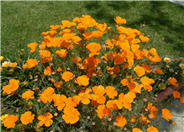
Common name:California Poppy, Golden Poppy
Botanical name:Eschscholzia californica
This small annual (sometimes acts as a perennial) plant will grow to less than 1' tall and has light, small blue green leaves with gold and orange flowers that bloom in spring and summer.
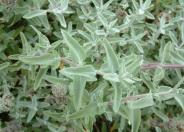
Common name:Point Sal Spreader Sage
Botanical name:Salvia leucophylla 'Point Sal Spreader'
The Point Sal Spreader Sage is an evergreen shrub that grows 3'-4' tall and 4'-6' wide. It has gray green to white leaves. Flowers are pinkish purple. This shrub tolerates heat and droughts. This Salvia is a California native. This variety has a more prostrate form than other varieties.
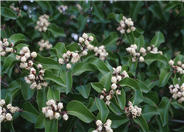
Common name:Sugar Bush
Botanical name:Rhus ovata
This dense, rounded evergreen shrub grows 8'-15' tall and wide, with creamy flowers between March and May. The shrub bears small red fruit. It grows well in inland areas and is drought tolerant. The foliage is leathery and rich looking and dark green in color. It needs additional water in low desert areas every 2 weeks or plant in area with afternoon shade. It needs a well drained site. It is susceptible to verticillium wilt in wet areas.
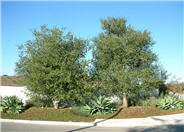
Common name:Coast Live Oak
Botanical name:Quercus agrifolia
The Coast Live Oak is an evergreen round headed tree. It can reach 15'-40' high and 20' wide; it grows very well from the coastal areas to the interior valleys. It is native to California, is drought tolerant, and attracts butterflies.
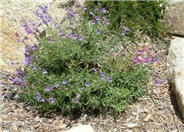
Common name:Foothill Penstemon
Botanical name:Penstemon heterophyllus
This perennial will grow 1.5'-2' tall and 2'-3' wide. It has glossy, blue green foliage with flowers that vary in color and bloom from spring through early summer.
Designer:
Photographer: GardenSoft
Maintain a two to four inch layer of mulch on the soil surface to reduce weeds, infiltrate rain water, and reduce compaction.
Remove irrigation water and fertilizer from areas where you don't want weeds to grow.